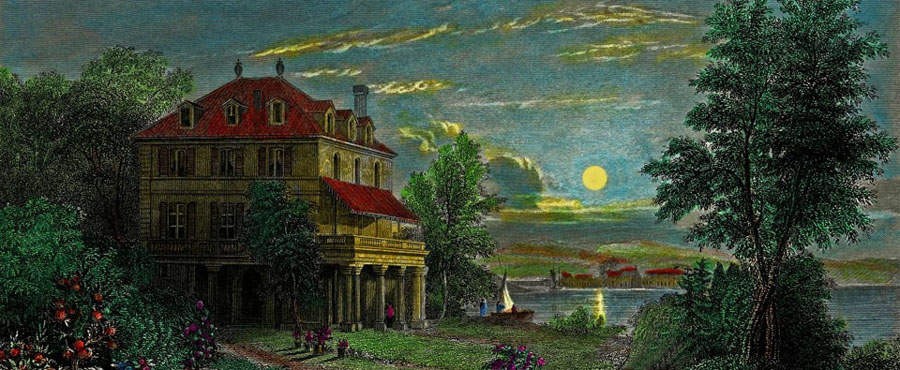In 1816, the world experienced an unprecedented event that modified human history eternally – a 12 months and not using a summer. This climatic anomaly was a direct results of the 1815 eruption of Mount Tambora, one of the powerful volcanic eruptions in recorded history. The eruption had far-reaching consequences that affected humanity in quite a lot of ways, from agriculture and the economy to social and cultural changes.
The April 10, 1815 eruption of Tambora within the Dutch East Indies (now Indonesia) released enormous amounts of volcanic ash, gases and debris into the atmosphere. The dust cloud spread across the globe and caused a major reduction in sunlight reaching the Earth’s surface, cooling the planet. As a result, 1816 became often known as “The Year Without a Summer” or “The Eight Hundred Frozen to Death” on account of the sharp drop in temperatures and weird weather conditions.
The effects of a 12 months and not using a summer were disastrous for agriculture as crops didn’t be harvested and food shortages occurred. In Europe, North America and other regions, widespread crop failures led to soaring food prices and economic instability. Famine struck many areas and reports of food riots, starvation and suffering were common. The lack of crops and livestock had a long-term impact on economies and livelihoods, pushing many communities to the brink of poverty and misery.

The 12 months and not using a summer also had significant social and cultural effects. As communities faced food shortages and economic challenges, social unrest and migration became common. People migrated looking for food and higher living conditions, which led to population displacement and cultural changes. In some cases, communities have needed to depend on relief funds and charity, which has deepened social inequalities.
The art and literature of the time also reflected the influence of the 12 months and not using a summer. Dark and gloomy themes dominated literature, art and music, revealing the tough reality of the climate anomaly. Works by renowned authors, including: Mary Shelley AND Lord Byron were influenced by the apocalyptic atmosphere of the time, which led to the creation of literary classics resembling Frankenstein and Vampire.

The Year Without a Summer also had a significant impact on the scientific community. Unusual weather conditions and the consequences of the cooling of the planet have initiated scientific research into the causes and consequences of the climate anomaly. Scientists have studied the Tambora eruption and its aftermath to grasp the impact of volcanic eruptions on climate and weather conditions, which has led to advances within the fields of climatology and natural disaster research.

The 12 months and not using a summer also had geopolitical implications. Harvest failures and economic instability led to social and political unrest in lots of regions. In Europe, the food crisis has contributed to political tensions and protests, fueling further social and political change. In the United States, the 12 months and not using a summer was a think about westward migration as people sought recent opportunities in less affected regions.
The effects of the 12 months and not using a summer weren’t limited to 1816. The Tambora eruption had long-term effects on climate and weather patterns, with some regions experiencing lower temperatures and variable weather conditions for several years after the eruption. This further disrupted agricultural cycles and economic activity, leaving an enduring mark on communities and economies for years to come back.
The event was a stark reminder of the vulnerability of human societies to natural forces and the necessity for preparedness, resilience and scientific understanding of natural disasters. The Year Without a Summer is a historical example of how a natural disaster can have widespread and long-lasting effects on human civilization. It serves as a cautionary tale concerning the delicate balance between human society and the environment.
One of the lasting legacies of the 12 months without summer was the event of agricultural practices and technologies. In the wake of the Tambora eruption, farmers and communities needed to adapt to a changing climate and find recent ways to grow crops and maintain their livelihoods. This led to the event of latest agricultural techniques resembling crop rotation, irrigation, and the usage of hardier plant varieties that were higher adapted to lower temperatures and shorter growing seasons. These advances in agricultural practices have helped communities turn into more resilient to changing weather patterns and contributed to the general progress of recent agriculture.
A 12 months and not using a summer also had consequences for public health. Harvest failures and food shortages led to malnutrition and weakened immune systems, making communities more liable to disease and epidemics. Outbreaks of diseases resembling cholera and typhoid have been reported in some areas, further exacerbating the challenges facing communities already battling the consequences of the eruption. This highlighted the important thing link between climate, food security and public health and the necessity to develop comprehensive strategies to deal with these interconnected challenges.

This event also had a psychological impact on people. The prolonged period of gloomy weather, crop failures and economic instability have taken a toll on the mental well-being of people and communities. The collective trauma and stress of this event led to increased anxiety, depression and other mental health problems. However, it also fostered resilience, solidarity and a way of community as people got here together to support one another in times of crisis.
Governments and communities around the globe have begun to acknowledge the necessity for disaster planning, early warning systems and response strategies to mitigate the consequences of comparable events in the longer term. The event paved the best way for the event of recent disaster management practices, including monitoring and predicting volcanic eruptions, improving agricultural resilience, and strengthening public health and emergency response systems.
In summary, the 12 months and not using a summer following the eruption of Tambora in 1815 had a profound and far-reaching impact on humanity. This has impacted agriculture, the economy, social and cultural points of society and led to scientific, geopolitical and public health changes. The event serves as a historic reminder of the interconnectedness between human civilization and the environment and the necessity for preparedness, resilience and sustainable practices to mitigate the consequences of natural disasters. The lessons learned from the 12 months that had no summer proceed to influence our understanding of the fragile balance between human society and the forces of nature, shaping our approach to disaster management and environmental stewardship now and for generations to come back.
It is a moving example of how a single volcanic eruption can change the fate of humanity and leave an enduring legacy on our planet. So, as we reflect on this historic event, allow us to learn from the teachings of the 12 months and not using a summer and strive to construct a more resilient and sustainable future for ourselves and future generations.









